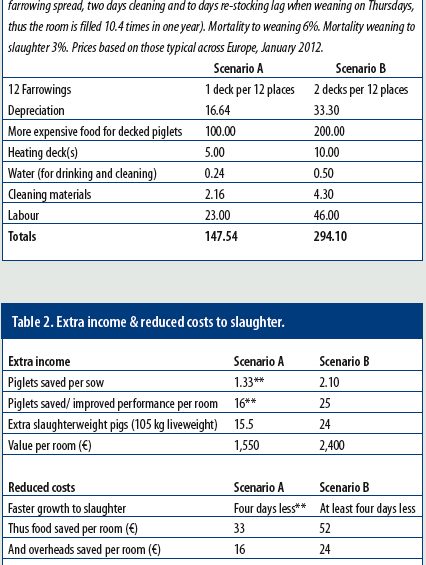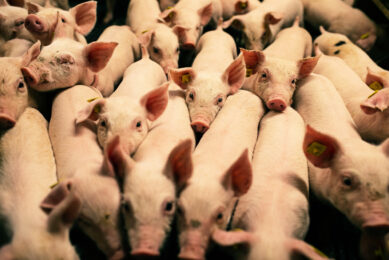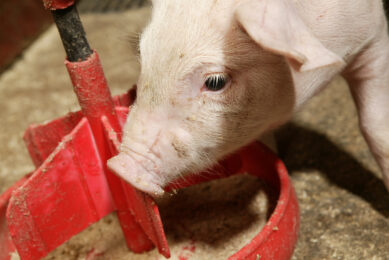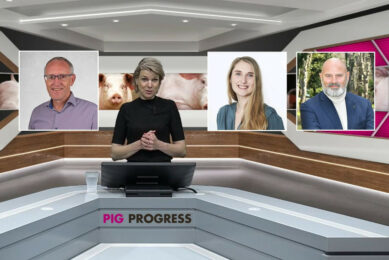What the textbooks don’t tell you about…The costs of rescue decks

Following the article ‘A rescue package for piglets in need’, by Dr Albert van Dijk, in Pig Progress 28.01, I put some cost-benefits to use, obtained from a selection of reliable sources. Conclusions are encouraging.
Of course, costs for installing rescue decks in sow farms vary from country to country. In general, a figure for a 250-sow herd would be around €1,830 per deck including all the support materials and delivery. There are exceptions – at least one sophisticated installation has cost €2,596/deck, which sounds a lot. When measured in costs per sow in the herd, however, it already looks better at €44-96 per sow. But the best it looks is when the very favourable econometric terms are taken into consideration, as econometrics can be described as the measurement of cost-effectiveness. More about that later, in Tables 3 and 4.
Extremes
The two extremes of €44 or €96 depend on one deck serving either 12 or six farrowing places in one farrowing room, or on larger farms where a special deck compartment elsewhere is preferred with advanced mixing and distribution. The former, Scenario A, at one deck per farrowing room of 12 crates is generally adequate for an efficient producer with current average litter sizes between 10.5 and 11.5 born-alives. And the latter, Scenario B, at two decks per room of 12 crates, could be preferable for producers already at 13 to 13.5 born-alives and those likely to achieve this level of hyperprolificacy in the near future, where they risk losing more born-alives and suffer what I have called ‘the shattered sow syndrome’.
Present producers tend to use the rescue deck concept to increase productivity from weaker members of the litter (Scenario A) while the latter group (Scenario B) allows the breeder to move around two litter members or more (after adequate colostrum intake) from say three really large sow or gilt litters into a deck so as to ease the rearing burden on the dams. This also allows any less-privileged litter members remaining behind to enjoy better access to their mother. Both scenarios allow better re-breeding productivity, especially from sows with the largest litters.
Slaughter weight, not weaning weight
The extra cost figures in Table 1 are calculated on those to slaughter weight, and not to weaning or post weaning (often as quoted up to now) as we do not, or very rarely, sell pigs at such light weights. I find rescue decks really come into their own when extra slaughter pig income from using them is measured. The calculations are based on a ‘per-farrowing-room’ basis, each containing 12 places and for a herd of 250-300 breeding females.
Financial benefits
We now need to set these costs against the likely improved income and savings from using the rescue deck concept under modern, efficient conditions. The figures in Table 2 are for the decked pigs. But there are also savings from quicker growth to slaughter from not only the decked pigs, but also all piglets occupying the room. Both have less pre-weaning competition and are heavier/ stronger at weaning.
Return on Extray Outlay (REO)
We can now obtain a return on extra outlay (REO) by dividing the benefit from more slaughter pigs sold, plus the production costs saved (also to slaughter), by the cost of running a decked farrowing room, obtained in Table 1. Both are excellent, e.g. a good growth enhancer fed to slaughter weight in the past obtained an REO of 6 to 1.
Annual Investment Value (AIV)
REO, while a useful measurement to compare items of expenditure such as feed additives, can be misleading. A modest REO which is turned over frequently across only three or four weeks can accumulate much more income over a period of one year, than an encouragingly high REO taking several months to do so.
So how hard is that money invested in rescue decks working? Take a look at Table 4. What is the rescue deck’s likely AIV? AIV is a measure of how frequently the REO is secured over time, usually one year. This enables any producer to compare this against other AIVs from the dozens of options available to him now on the market – from spending on individual products such as items of equipment, feed additives, vaccines, etc. to new systems/ techniques or large capital projects. The higher the AIV in comparison to other options the better, as the money invested into it is likely to be working harder if it is supported by a high AIV.
Any AIV over 8 is good these days. The advantage a rescue deck possesses (in fact any option influencing performance or saving costs) is that the fixed and/ or working capital needed to support it is turned over frequently, because with young animals the time it takes to become effective is short. Other things such as really good creep feeds, piglet heating efficiency, peri- and post-weaning stockmanship skills with adequate workloads, farrowing house cleanliness, staff being present at birth etc. are examples showing high AIVs. Like rescue decks, they may look to be expensive at first sight, but their high AIVs show that investing in them should be considered as priorities by a financially-astute producer considering where best to spend his money.
Acknowledgements
Thanks to pioneer producer Stuart Bosworth, consultant Andrew Zarkos-Smith and other users. The recent BPEX work on costings; ‘The effect of rescue decks on piglet mortality in a prolific sow herd’, Jan 2012, was also consulted.











